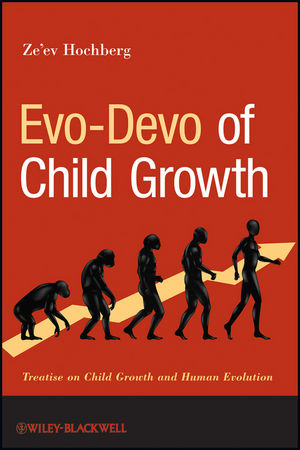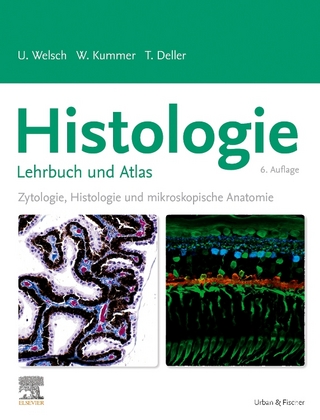
Evo-Devo of Child Growth
Wiley-Blackwell (Verlag)
978-1-118-02716-5 (ISBN)
- Titel z.Zt. nicht lieferbar
- Versandkostenfrei innerhalb Deutschlands
- Auch auf Rechnung
- Verfügbarkeit in der Filiale vor Ort prüfen
- Artikel merken
Logically organized and clearly written, Evo-Devo of Child Growth:
Sets a solid foundation of principles such as evolutionary thinking in medicine and child growth, life history theory, and heterochrony and allometry
Examines the relationship between child growth and the theory of life history
Applies evo-devo theory to fetal growth, infancy, childhood, juvenility, adolescence, and preadulthood
Explores the trade-offs and adaptive phenotypic plasticity during transition periods
Explains the role of life history theory in understanding and diagnosing growth disorders such as Down syndrome, Noonan syndrome, and Silver-Russell syndrome
In addition to the author's own analysis and observations, this book also features notes from leading clinicians and evolutionary biologists, offering additional perspectives on the relationship between evo-devo and child growth and development.
Evo-Devo of Child Growth provides a new perspective for evolutionary biologists to understand the phases and transitions of child growth. Moreover, it offers a new approach to help clinicians to better understand and diagnose a broad range of child growth disorders.
Dr. Ze'ev Hochberg, MD, PhD, is a practicing pediatric endocrinologist at the Rambam Medical Center and a professor of pediatric and endocrinology at the Technion — Israel Institute of Technology in Haifa, Israel. A former president of the prestigeous European Society for Paediatric Endocrinology, Dr. Hochberg is currently Editor-in-Chief of the series Yearbook of Pediatric Endocrinology, and the Series Editor of Practical Algorithms in Pediatric Subspecialties. He has over 35 years of experience writing for publication, with works including monographs, books, and over 220 peer-reviewed?basic scientific and clinical?articles.
CONTENTS I. Introduction
a. Evolutionary thinking in medicine
b. Evo-Devo
c. Life history theory
d. Evolutionary perspective in child growth and maturation
e. Child growth and the environment
f. Heterochrony and allometry
g. Adaptive plasticity in life-history
II. Child growth and the theory of life history
a. Life-history stages
b. Transitions between life-history stages
c. Developmental plasticity and adaptation
d. Cultural adaptation to the environment
e. Adaptive plasticity of attachment behaviors
f. Note by George Chrousos on stress in early life: a developmental and evolutionary perspective
1. Stress concepts
2. Stress mechanisms
3. Pathological effects of stress
f. Note by Stefan Borenstein and Andreas Androutsellis-Theotokis on endogenous stem cells as components of plasticity and adaptation
1. The adult mammalian brain: Plastic or rigid?
2. Hidden plasticity potential in the brain
3. Neurogenic cell vs. neural stem cell
4. Does the role of neural stem cells change from the developing age to the adult?
5. The disconnect between neurogenesis and the presence of neural stem cells
6. Fetal vs. adult neural stem cells
7. Signal transduction of stem cell regulation
8. Beyond the nervous system
9. Conclusions
III. Fetal growth
a. Endocrine and metabolic control of fetal growth
b. The role of the placenta
c. Developmental origins of health and adult disease (DOHaD)
d. Imprinted genes and intrauterine growth
e. Note by Alan Templeton on the evolutionary connection between senescence and childhood growth and development
1. An evolutionary theory of aging
2. Thrifty genotypes and antagonistic pleiotropy
3. Thrifty genotypes and heart disease
4. Why we grow old: the answer
IV. Infancy
a. The reproductive dilemma
b. The obstetrical dilemma
c. Growth of the infant
d. Endocrine aspects of infantile growth
e. Infancy - childhood transition: determination of adult stature
f. Weaning from breast-feeding
V. Childhood 146
a. The weanling's dilemma
b. The grandmother theory
c. Growth of the child
d. Endocrine aspects of childhood growth
VI. Juvenility
a. The social/cognitive definition of juvenility
b. Paleo-anthropological juvenility and teeth eruption
c. Adrenarche
d. Juvenile body composition
e. Growth of the juvenile
f. Trade-offs for the timing of transition to juvenility
g. Precocious juvenility
h. The Pygmy paradigm for precocious juvenility
i. Evolutionary perspective in precocious juvenility
VII. Adolescence
a. Human evolution of adolescence
b. Transition from juvenility to adolescence
c. Pubertal growth
VIII Preadulthood
IX Evolutionary strategies for body size
a. The little people of Flores
b. Lessons from the great apes
c. The Handicap theory
d. Sexual dimorphism
e. The role of sex steroids
X Energy considerations
a. Endocrine control of energy expenditure
b. Weaning and growth in a malnourished environment
XI. Stage transitions: trade-offs and adaptive phenotypic plasticity
a. Trans-generational influences in life-stages transition
b. Epigenetics and life-history stage transitions
c. Note by Ken Ong on population genetics and child growth and maturation
1. Genetic adaptation
2. The genetic epidemiology of child growth and maturation
3. Basic principles and heritability estimates from twin studies
4. More complex heritability models
5. Heritability is dependent upon the setting
6. Essential genes for childhood growth and maturation
7. Common genetic variants for childhood growth and maturation:
8. GWAS findings lead to new biology:
9. GWAS findings lead to new phenotypic understanding
10. Genetic adaptations for childhood growth and maturation
11. Conclusions
d. Note by Moshe Szyf on the DNA methylation pattern as a molecular link between early childhood and adult health
1. Introduction
2. DNA methylation patterns and their roles in cellular differentiation and gene expression
3. DNA methylation as a genome adaptation mechanism
4. Epigenetic programming by the early life social environment
5. Genome and system wide impact of early life adversity
6. Prospective and summary
XII. Life history theory in understanding growth disorders
a. Down syndrome
b. Noonan's syndrome
c. Silver-Russell syndrome
d. Additional cases
XIII. When the packages disintegrate
XIV. Concluding remarks
References
| Erscheint lt. Verlag | 20.2.2012 |
|---|---|
| Verlagsort | Hoboken |
| Sprache | englisch |
| Maße | 183 x 262 mm |
| Gewicht | 599 g |
| Themenwelt | Medizin / Pharmazie ► Medizinische Fachgebiete |
| Studium ► 1. Studienabschnitt (Vorklinik) ► Histologie / Embryologie | |
| Naturwissenschaften ► Biologie | |
| ISBN-10 | 1-118-02716-7 / 1118027167 |
| ISBN-13 | 978-1-118-02716-5 / 9781118027165 |
| Zustand | Neuware |
| Haben Sie eine Frage zum Produkt? |
aus dem Bereich


